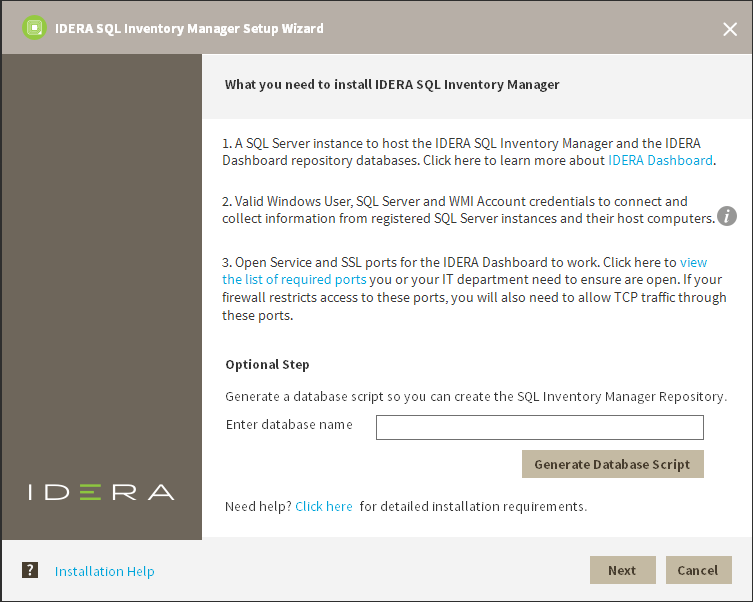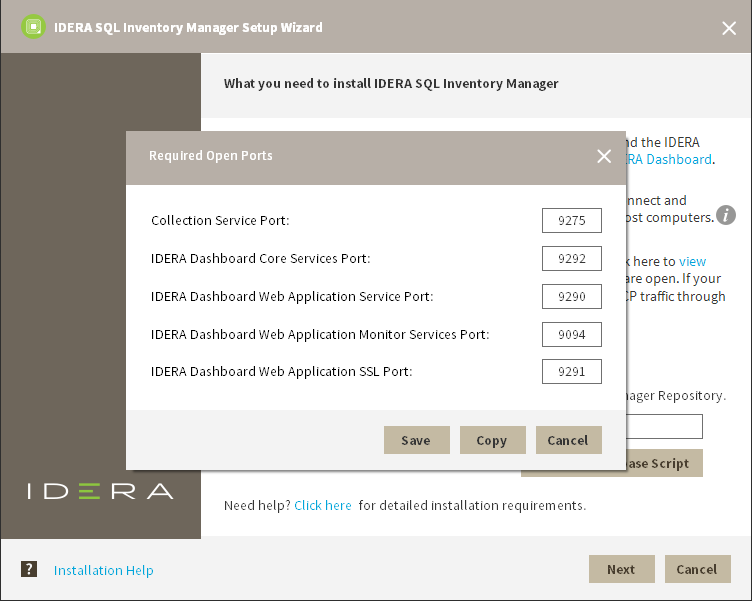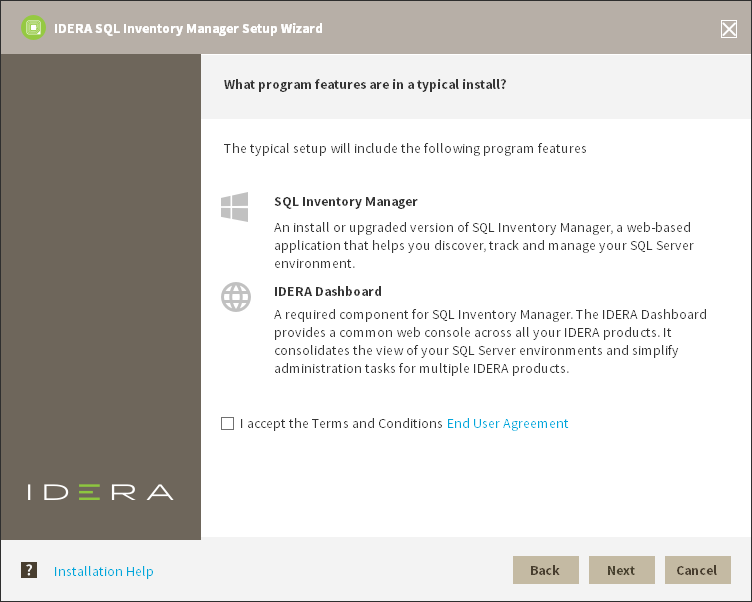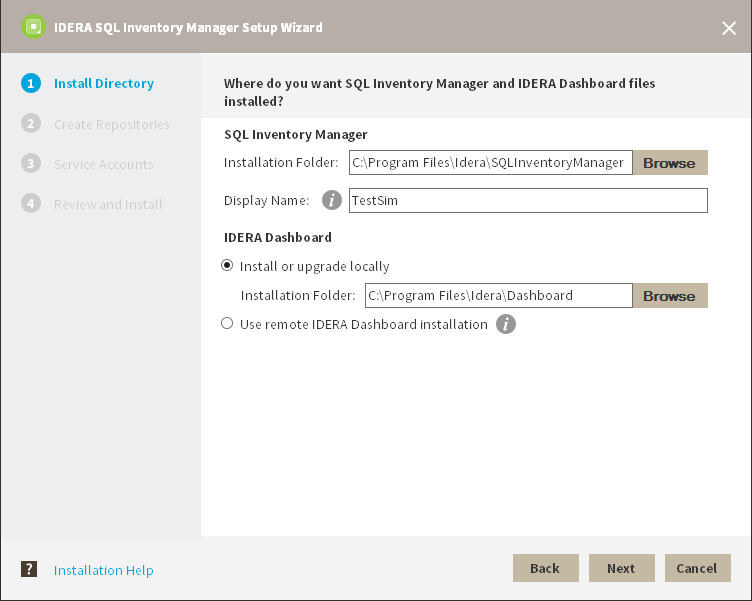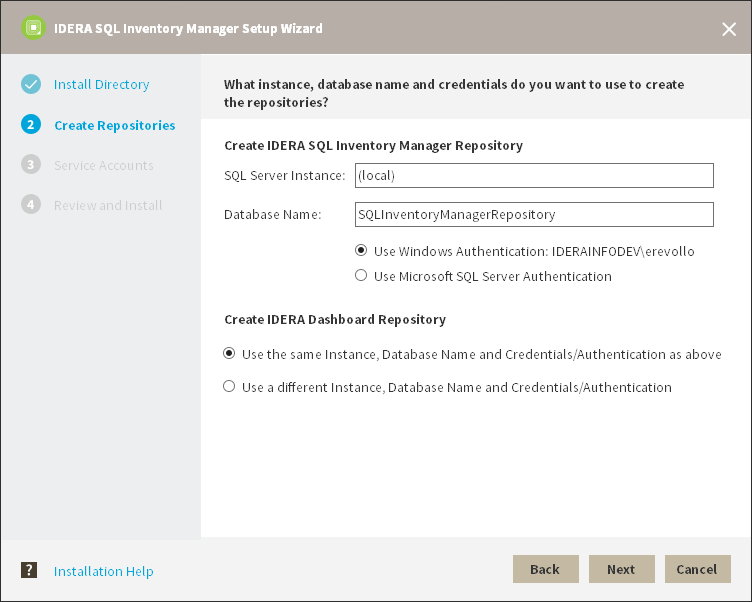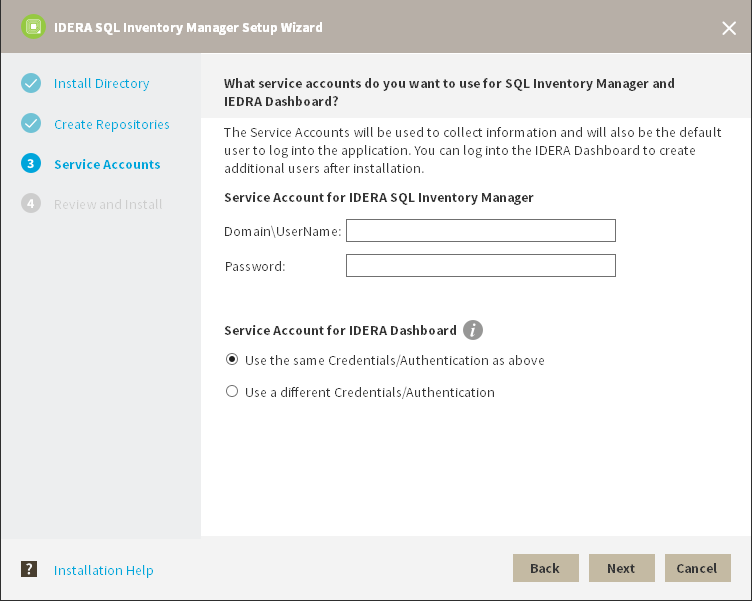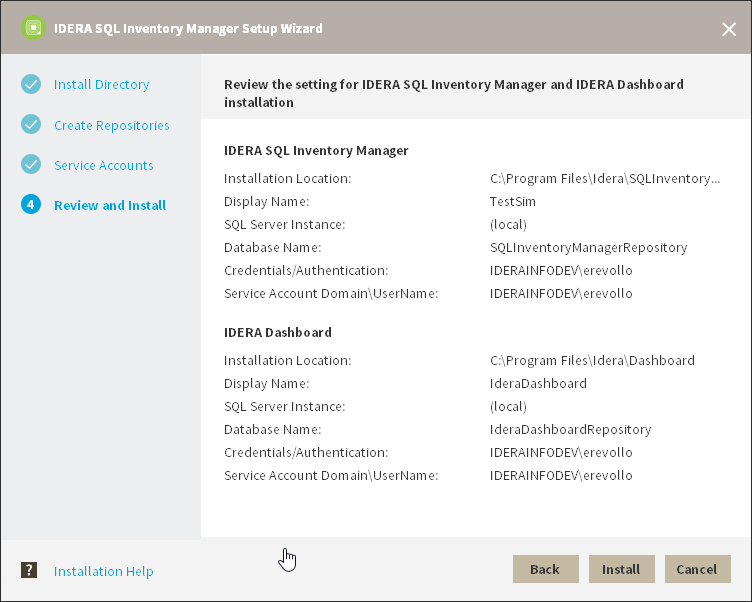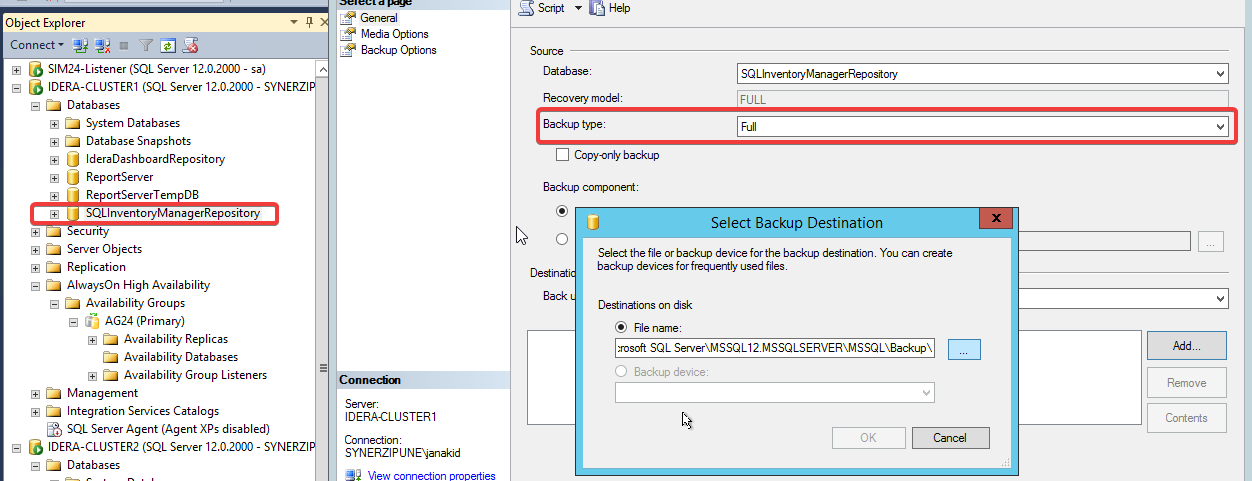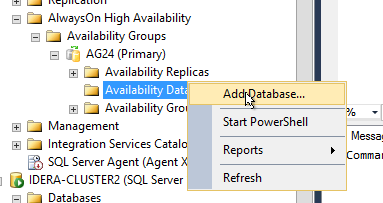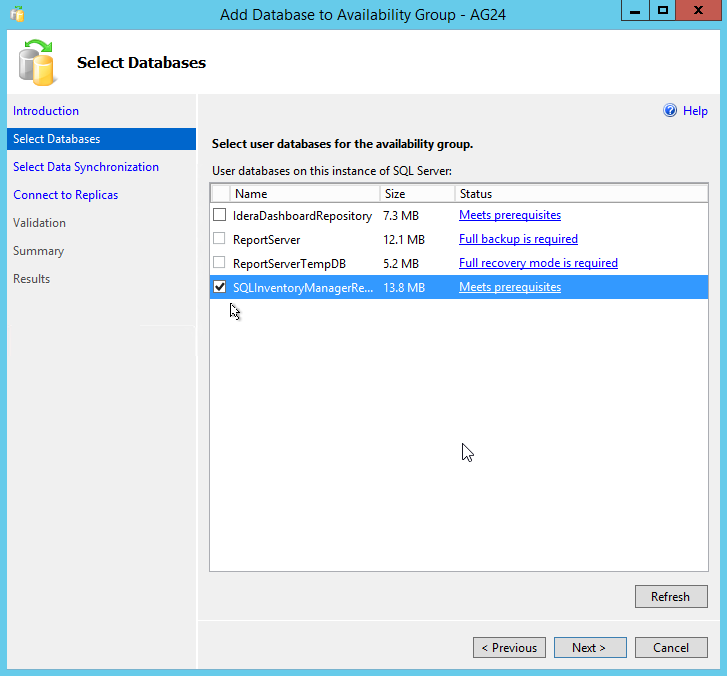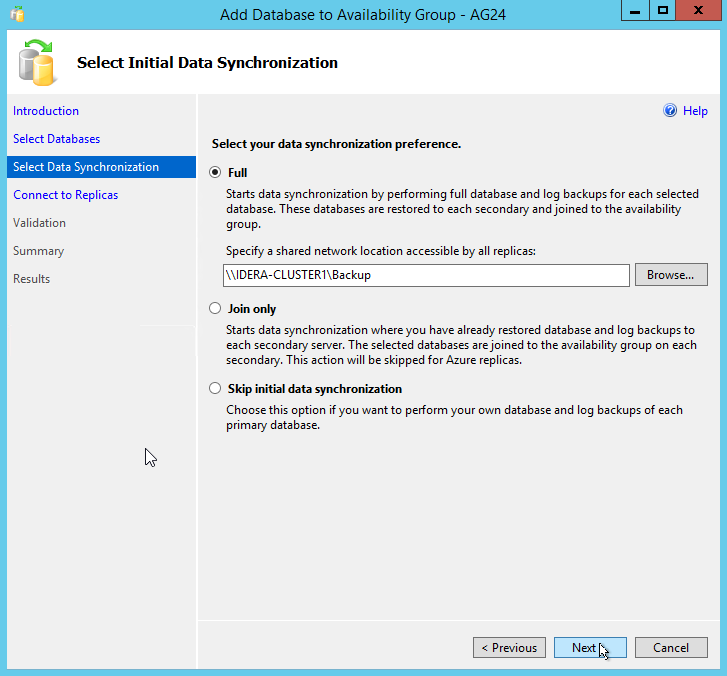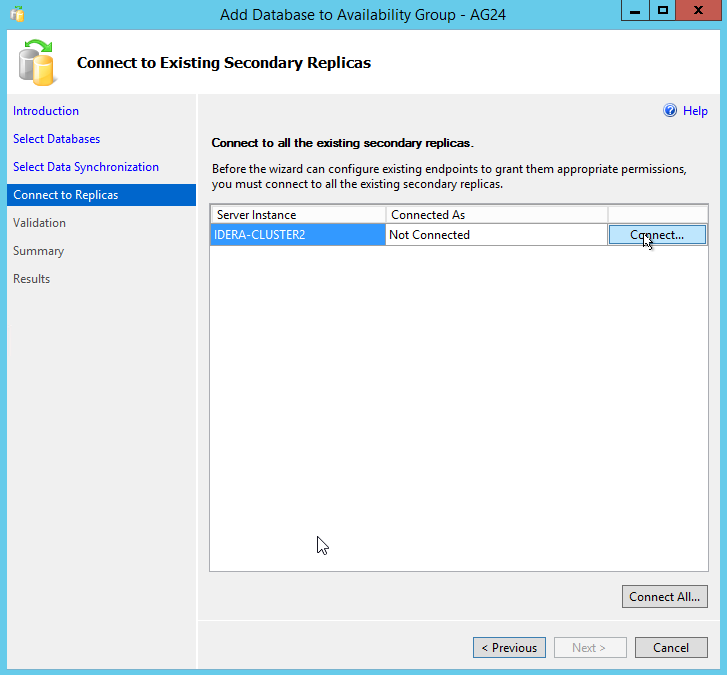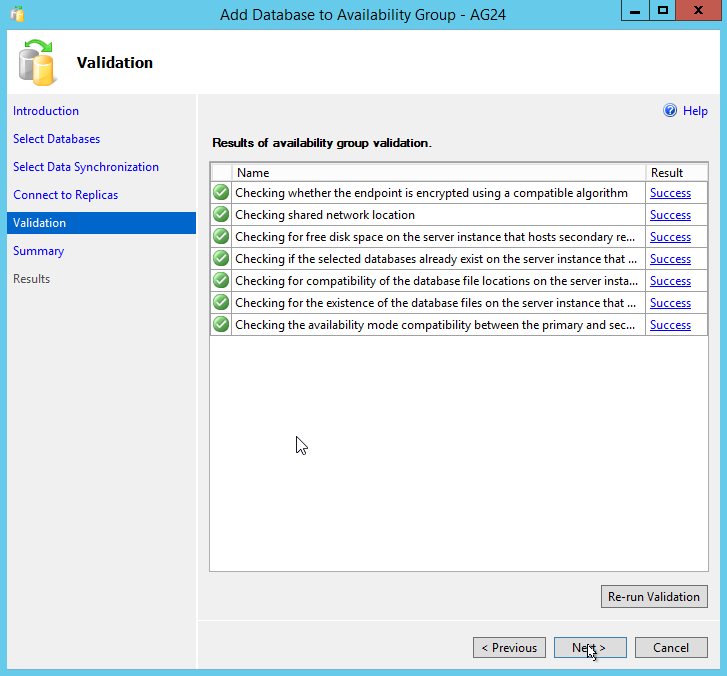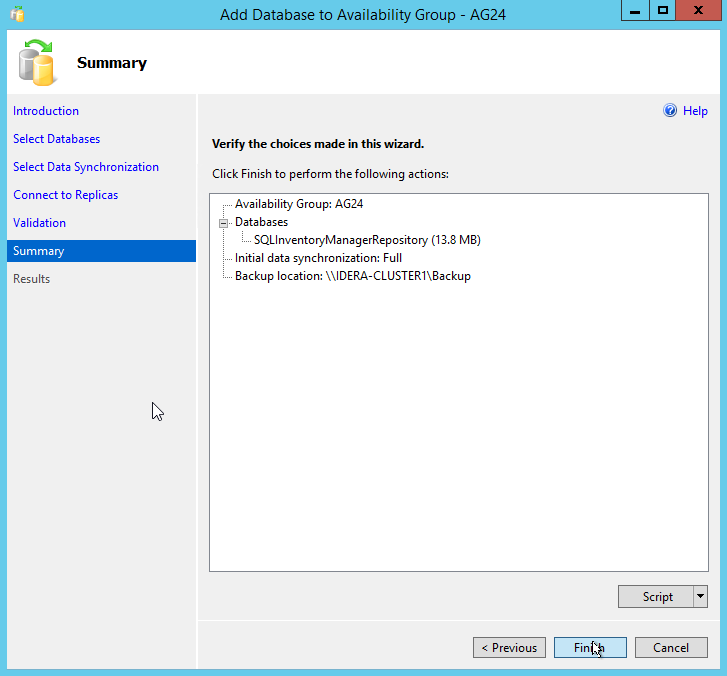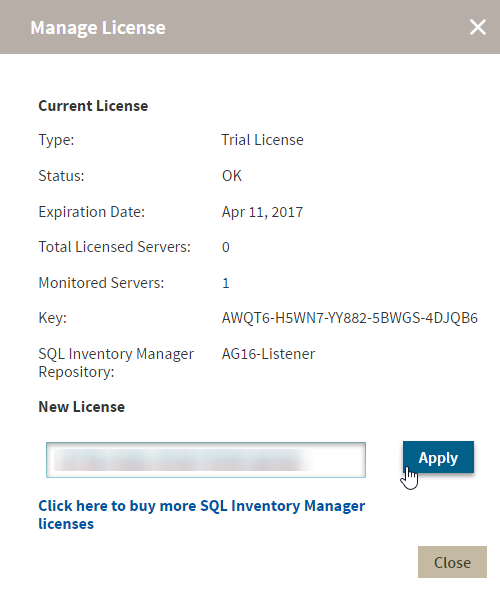This section guides you through the installation of IDERA SQL Inventory Manager on an availability group. You can install IDERA SQL Inventory Manager on any system that meets or exceeds the product requirements.
Before you install IDERA SQL Inventory Manager, be sure to have:
- A local administrator account on the machine you are installing the product.
- A host machine for SQL Inventory Manager services.
- A Clustered environment and an available SQL Server instance in the fail over cluster. For more information on configuring a fail over cluster refer to Microsoft Documentation.
- An account with permissions to read/write and create databases and update their schemas.
You can also grant IDERA SQL Inventory Manager Product Administrator permissions in the IDERA Dashboard. For more information, see Managing users in the IDERA Dashboard.
Installing IDERA SQL Inventory Manager
Before you install IDERA SQL Inventory Manager, be sure to meet the requirements mentioned before. Open the installer and follow these steps:
- On the IDERA SQL Inventory Manager Setup window, click Next to continue with the installation. You can optionally generate a script for generating the SQL Inventory Manager Repository database.
You must verify that the Firewall allows TCP (Transmission Control Protocol) traffic through The ports you want to use. By default, IDERA SQL Inventory Manager uses ports 9275 and 9291 for the Collection and Web Application services respectively.
To see or edit the default ports SQL Inventory Manager uses click view the list of required ports.Port values should be between 1 and 65535.
Keep in mind, that browsers may block some specific ports. To check a list of all blocked ports on Mozilla Firefox, see Mozilla Port Blocking.
- Read the License Agreement. If you agree, click I accept the Terms and Conditions and then click Next.
- On this section you can specify a Display Name for your SQL Inventory Manager installation and the location of both SQL Inventory Manager and IDERA Dashboard.
- If you want to change SQL Inventory Manager default path, click Browse.
- On the Display Name box, type a unique name for this instance of IDERA SQL Inventory Manager. A Display Name allows you to identify each instance of IDERA SQL Inventory Manager or other IDERA products when you have more than one installation of the same product. IDERA recommends that you use a name based on a location or function, such as SIM-Prod or SIM-West. Note that this field accepts only alphanumeric characters (A-Z, a-z, 0-9) and dashes (-).
- Choose Install or upgrade locally to install IDERA Dashboard on the default installation path. If you want to change IDERA Dashboard default path, click Browse.
If you want to register SQL Inventory Manager with an existing remote IDERA Dashboard installation, choose Use remote IDERA Dashboard Installation and follow these steps .
- Specify a SQL Server cluster node and database name for the creation of the SQL Inventory Manager Repository database and the IDERA Dashboard Repository database respectively.
By default, the setup program uses your Windows logon account to create and access the Repository databases. Use Microsoft SQL Server connection credentials to install on an Availability Group, select Use Microsoft SQL Server Authentication and enter your credentials on the Microsoft SQL Server credentials dialog.
- Specify a User Name and a Password for the Service Account for IDERA SQL Inventory Manager. Use the format
<Domain Name>\<User Name>. IDERA SQL Inventory Manager uses this account to connect, discover, and gather configuration information from SQL Servers. The installer grants the "Log on as a Service" right to the account that you specify. Click Next to continue.
If you want to use different credentials for the Service Account for IDERA Dashboard, choose Use different Credentials/Authentication, and type your credentials. IDERA Dashboard uses this account when accessing the IDERA Dashboard to share data. - Click Install if you are ready to start the installation. If you want to review or change any of your installation settings, click Back.
- After the installation is complete, you can select Launch IDERA SQL Inventory Manager to launch SQL Inventory Manager immediately after the installation window closes. Alternatively, you can access IDERA SQL Inventory Manager web application through the following link: http://<ServerName>:9291 where ServerName is the name of the machine on which you installed the IDERA SQL Inventory Manager services.
When IDERA SQL Inventory Manager launches on your browser, you should use your Windows user account with your respective password to log in to the product. Please take into account that IDERA SQL Inventory Manager does not store passwords.
Configuring SQL Server
Once the SQL Inventory Manager installation completes, l aunch SQL Server Management Studio and connect to the cluster environment’s SQL Server Instance where you installed the SQL Inventory Manager Repository.
For the SQLInventoryManager database set its recovery model to "full".
- Create a Full backup for the SQLInventoryManager database.
- Under 'Always ON High Availability' go to the availability group you want to use and select Add Database
- On the Add Database to Availability Group dialog click Next and follow these steps:
- Select the SQLInventoryManager repository database and click Next.
- Select Full data synchronization and click Next.
- Connect to all secondary nodes and click Next.
- Once validation finishes successfully click Next.
- Check your settings on the Summary section and click Finish to continue.
- Once the wizard completes click Close.
- Go to the Administration tab of SQL Inventory Manager and apply your license.
- Select the SQLInventoryManager repository database and click Next.
